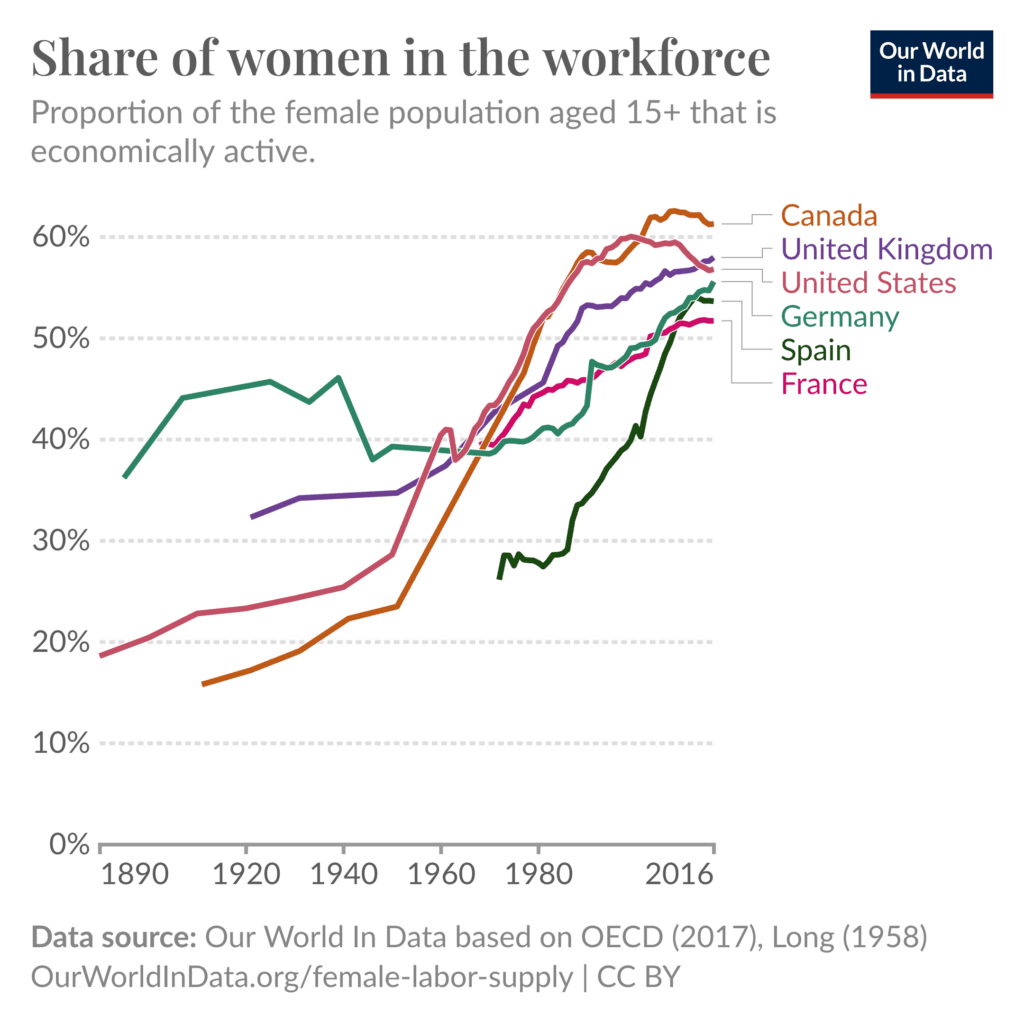From Kitchen Sink to Corner Office: How Women Rewrote the Rules of Their Lives in the last 50 Years
Over the past half-century, women's roles have undergone a profound transformation. We went from kitchen sink to corner office but if we look at how women rewrote the rules of their lives in the last 50 Years, there are many questions wide open...

Fifty years ago, my grandmother woke up before dawn to iron my grandfather’s shirt, pack his lunch, and serve breakfast before he left for work. She then spent the rest of her day running the home like a well-oiled machine—cleaning, cooking, caring for children, and ensuring everything ran smoothly, without ever drawing attention to her own exhaustion. That was her world. That was her job. And it was one she carried out with pride, even if it was invisible to the outside world.

I often think about how different my life is from hers. I wake up before dawn too—but to prepare for a meeting, respond to emails, or squeeze in a workout before I drop the kids off and head to work. My partner and I share the load, though not always equally, and there are still days when I wonder if I’m doing enough. Enough at work. Enough at home. Enough for myself.
This shift, from kitchen sink to corner office, to a multi-dimensional life, isn’t just about new opportunities. It’s about mindset. It’s about how women began to believe they could do more and should do more, even when the world wasn’t entirely ready to support that possibility.
I want to invite you to explore that evolution. How did we get from my grandmother’s world to mine? What did we gain? What did we lose? And what does the data tell us about where we still need to go?
By 2050, women globally will still be spending 9.5% more time or 2.3 more hours per day on unpaid care work than men.
UN Women
This isn’t just a story of progress but a story of burnout, social pressure, persistence and powerful change. And it belongs to all of us.
Over the past half-century, women’s roles have undergone a profound transformation. Once confined predominantly to domestic spheres, women now actively participate in various facets of public and professional life. This shift reflects not only changes in societal norms but also the resilience and determination of women to redefine their identities and contributions.
From Domestic to Professional Roles

In the mid-20th century, the prevailing “breadwinner-homemaker” model positioned men as financial providers and women as caretakers of the home. However, this paradigm began to shift in the 1970s and 1980s as increasing numbers of women entered the workforce. In Spain, for instance, female labor force participation more than doubled over the past five decades, rising from approximately 25% to over 50% .
Despite these advancements, women continue to shoulder a disproportionate share of unpaid domestic responsibilities. Globally, women spend about three times as many hours on unpaid domestic and care work as men. In the UK, most women perform an average of 57 minutes more unpaid work daily than men, highlighting persistent gender disparities in household labour .
Evolving Attitudes and Societal Expectations
Public perceptions of gender roles have evolved significantly. In the United States, the proportion of individuals who believed that family life suffers when a woman works full-time decreased from 35% in 1988 to 28% in 2012. Similarly, support for co-education in the UK increased from 43% in 1946 to 76% today .
These shifts indicate a growing acceptance of women’s participation in both professional and domestic spheres. However, challenges remain, particularly in achieving true equity in household responsibilities and professional opportunities.
It’s a pattern so many women recognize: the late-night emails, the quiet resentment during school pick-up, the constant juggling of professional ambition and unpaid domestic labor. No matter how far we’ve come in boardrooms, labs, and creative industries, many women still shoulder the invisible workload at home—and that load weighs heavily on their professional opportunities.
Globally, women perform three times more unpaid domestic and care work than men, according to the United Nations. In the UK, that translates to an extra 57 minutes of housework per day for women, and in the U.S., the gap is even larger for mothers of young children. This “second shift”—a term popularized in the 1980s by sociologist Arlie Hochschild—continues to impact everything from career advancement to mental health.
So what happens when we do share the kitchen sink?
Women Gain Headspace to Professional Confidence
When men take on their fair share of domestic work, women gain the time and mental clarity to invest in their careers. Whether it’s staying late for a client presentation, attending a networking event, or simply having time to think creatively without planning dinner in the back of their minds—these moments matter.
A 2022 McKinsey report found that women with supportive partners are 1.5 times more likely to hold leadership positions. It’s not a coincidence; it’s cause and effect.
Workplace Flexibility
The more men participate in childcare and household duties, the more normalized it becomes for all workers to seek flexible schedules. This cultural shift reduces the stigma around part-time roles, paternity leave, or working from home. It also forces employers to design policies that support families—not just women.
Countries which actively encourage equal parental leave, have seen a ripple effect: women are more likely to return to work, stay in the workforce long-term and climb the professional ladder.
It Reshapes What Leadership Looks Like
When men step up at home, it allows women to step into roles traditionally dominated by men at work not just because they have more time, but because the cultural perception of leadership starts to shift. It moves away from outdated expectations of 24/7 availability and towards values like empathy, adaptability and compassion, traits often honed through caregiving. We start to see a different kind of leadership where balance isn’t a weakness but a strength.
It Builds a More Resilient Economy
The economy suffers when talent is underutilized. According to the IMF, closing gender gaps in employment could boost GDP by up to 35% in some countries. Achieving equity at home means more women can participate fully and consistently in the workforce—not just in entry-level roles, but in decision-making positions.
And when women thrive professionally, it benefits families, communities, and future generations.
The bottom line is this: equity at home isn’t a soft issue. It’s a structural one with hard consequences. True progress won’t come from women working harder, but from society rebalancing the scales. Sharing the mental load and physical responsibilities of home life is not just fair it’s foundational to building a truly equal future.
The Ongoing Journey Toward Equality
While significant progress has been made, the journey toward gender equality continues. Women have redefined their roles, balancing careers and family life, and challenging traditional norms. Yet, achieving true parity requires continued efforts to address systemic inequalities and societal expectations.
As we look to the future, it’s imperative to support policies and cultural shifts that promote equitable sharing of domestic responsibilities and equal opportunities in the workplace. Only then can we realize a society where individuals are free to pursue their aspirations, unencumbered by outdated gender roles.
Do you want to share your story and inspire our readers ? Know that YOUR EXPERTISE is paving the way for a fairer, happier society.





